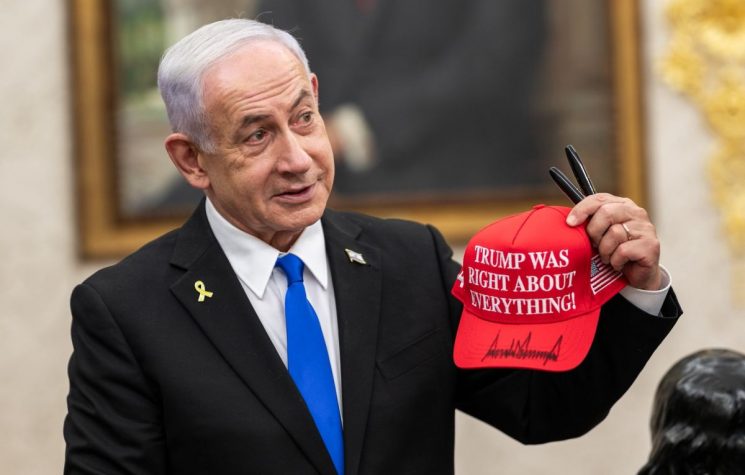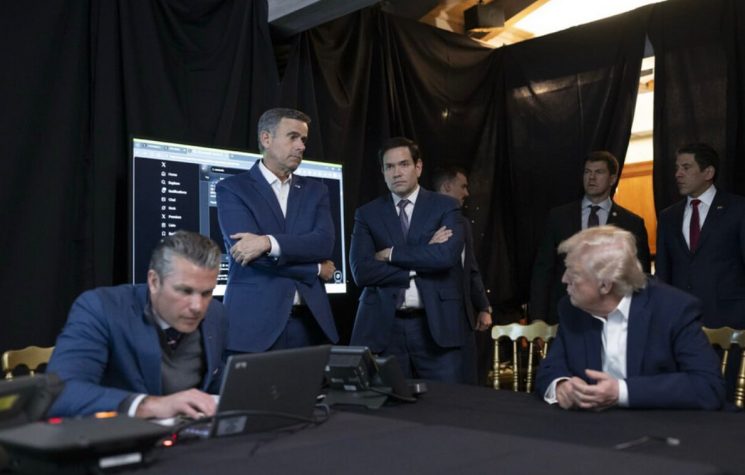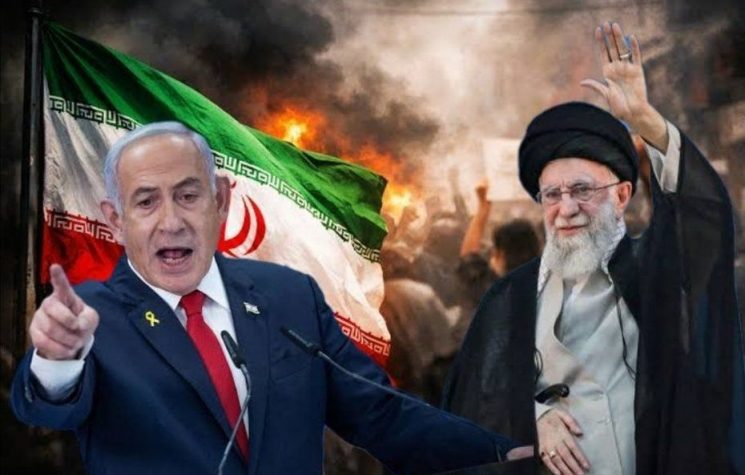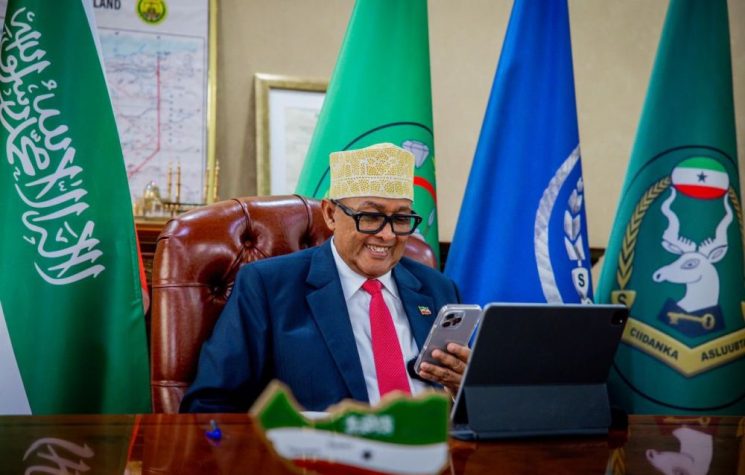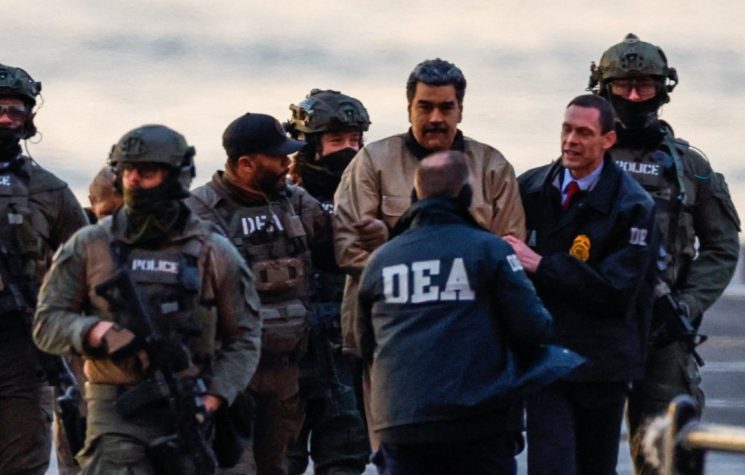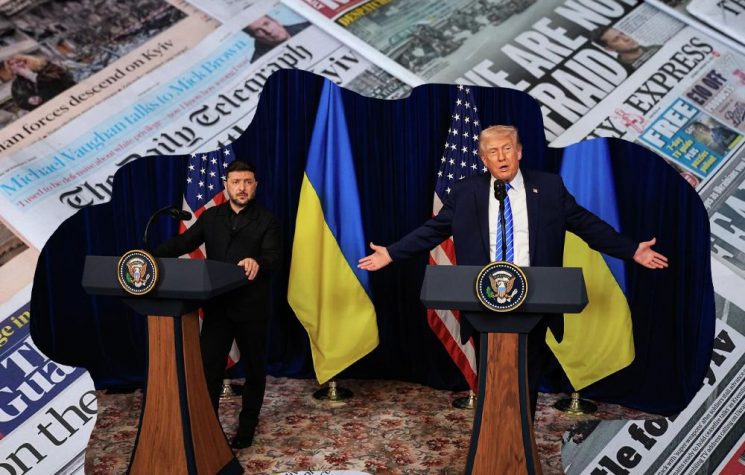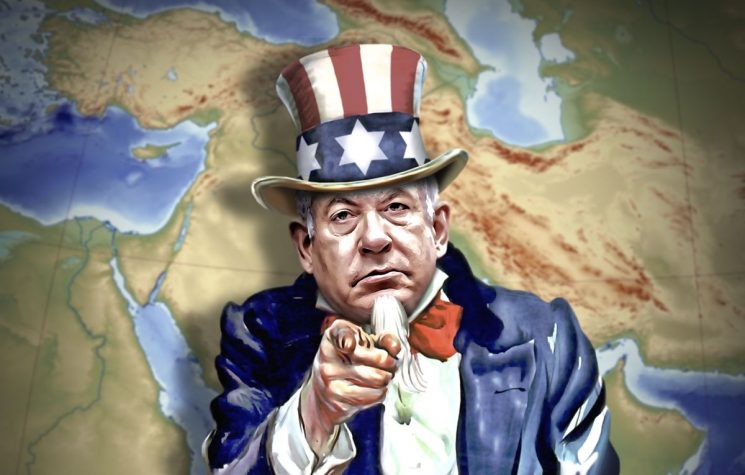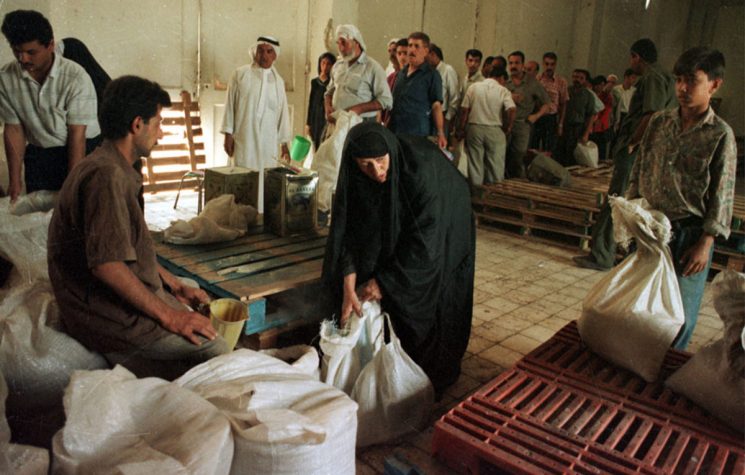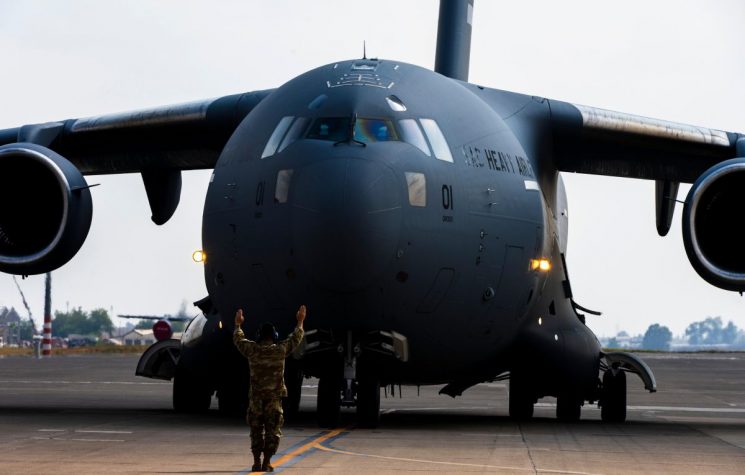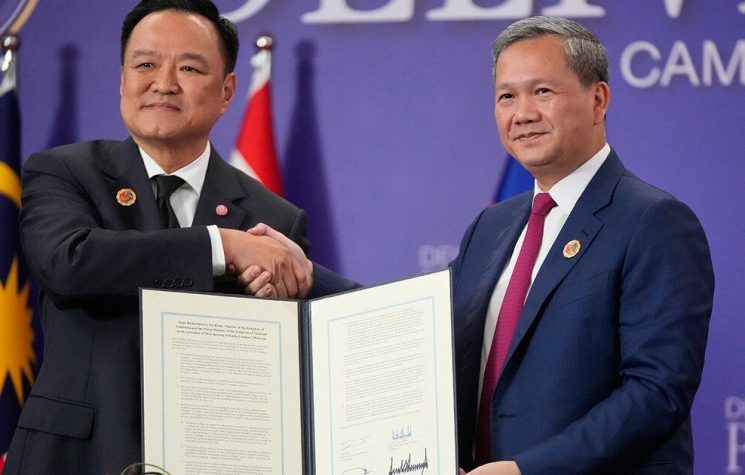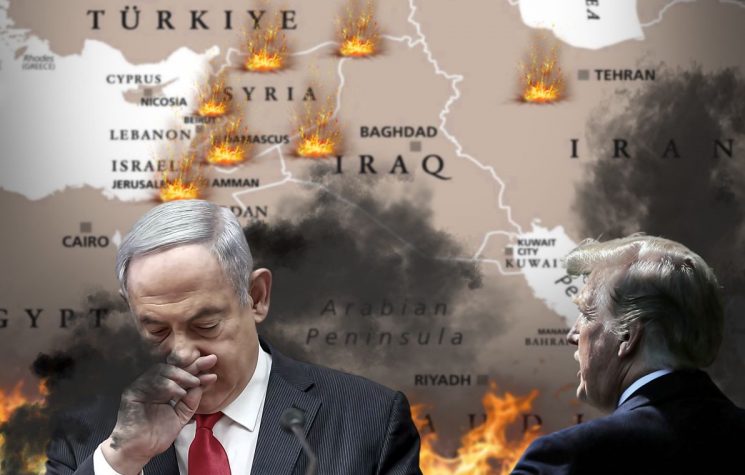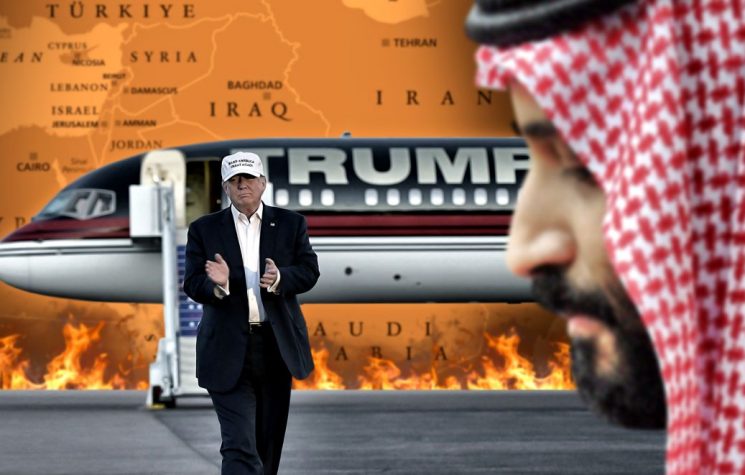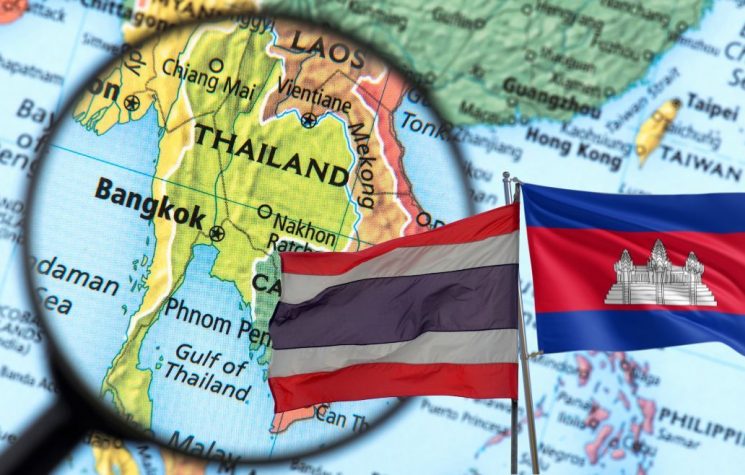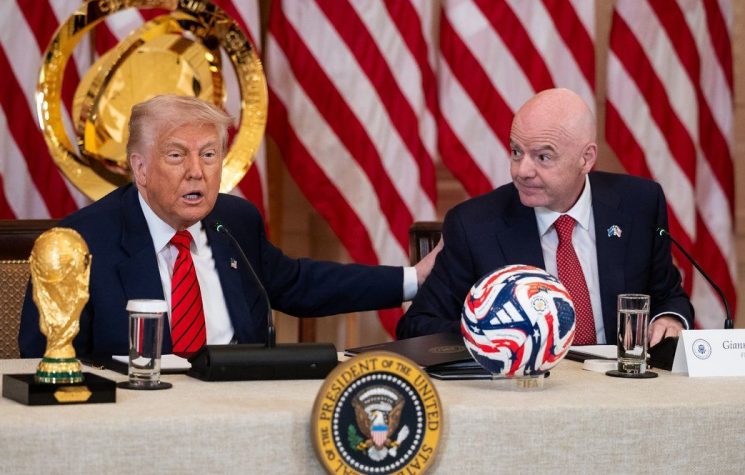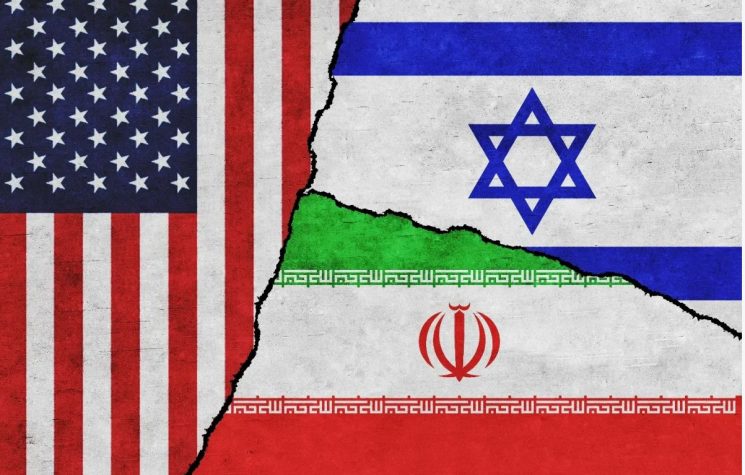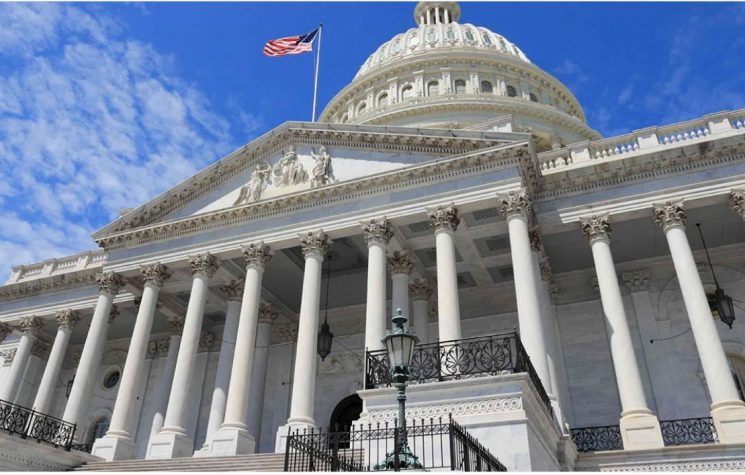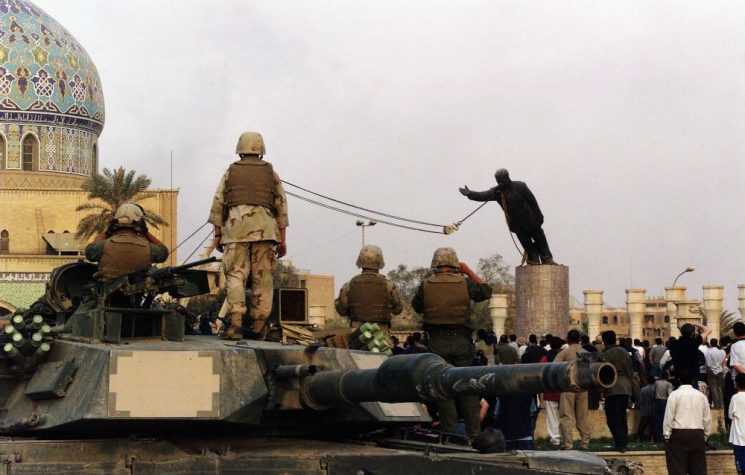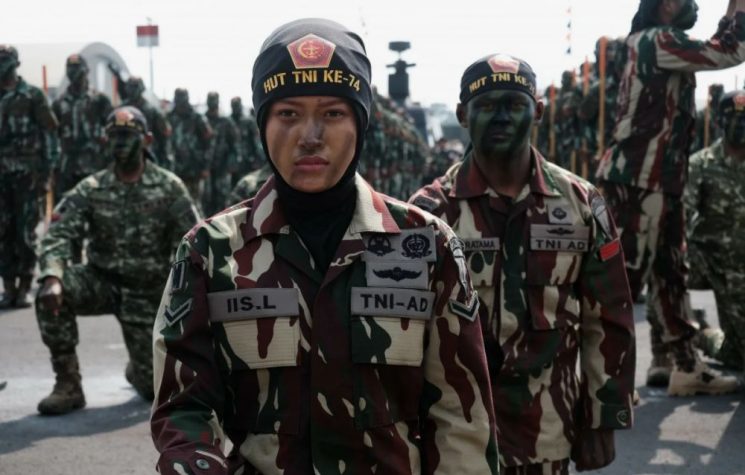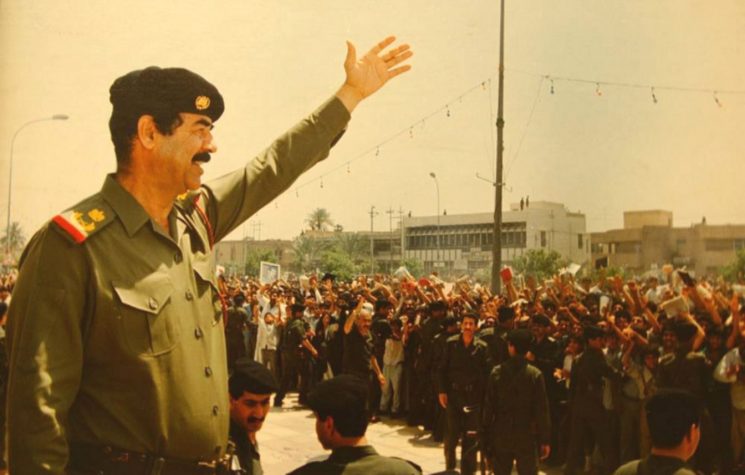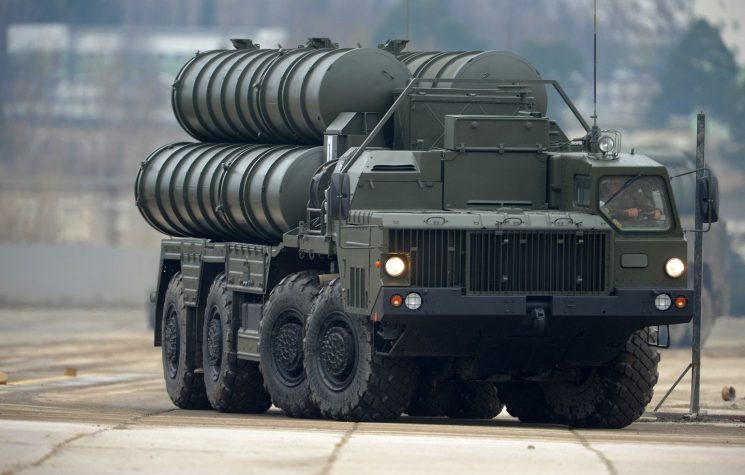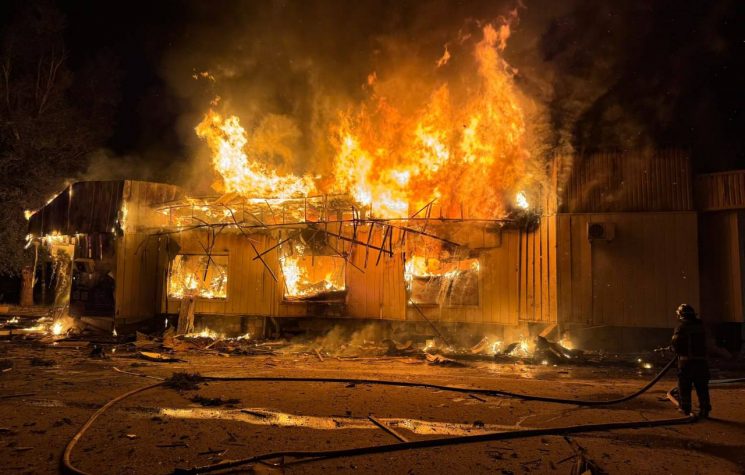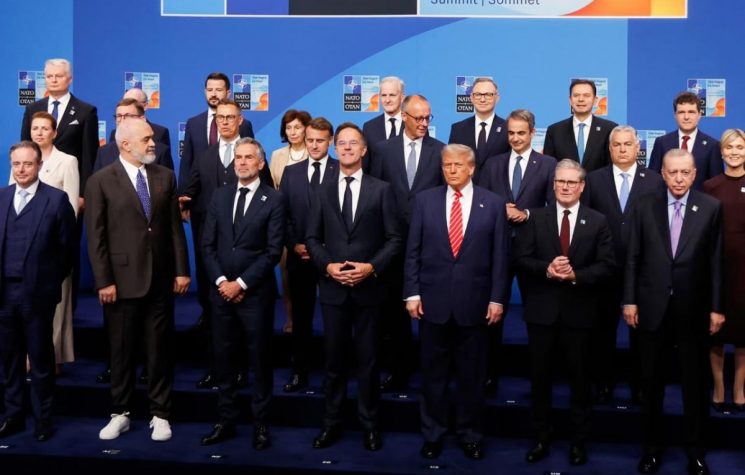The most crucial part of the agreement — preventing either country’s territory from being used against the other — forms the core of the pact, a seed from which a full-fledged military alliance could easily emerge.
Join us on Telegram![]() , Twitter
, Twitter![]() , and VK
, and VK![]() .
.
Contact us: info@strategic-culture.su
On August 11, 2025, Iran’s Secretary of the Supreme National Security Council, Ali Larijani, and his counterpart, Qassim al-Araji, Iraq’s National Security Adviser, signed a new Memorandum of Understanding (MoU) in Baghdad — a Joint Security Pact formally centered on safeguarding their shared border. Iraqi Prime Minister Mohammed Shia’ al-Sudani personally attended the signing ceremony. This MoU is essentially an extension of the March 2023 agreement, which also addressed border security — particularly in regions where Kurdish militants operate. It commits Iraq and Iran to preventing their territories from being used by any third party — individuals, groups, or states — to threaten the other signatory.
After the signing, Larijani emphasized that the pact establishes a joint security zone designed to deter foreign powers and terrorist factions from destabilizing the Iran–Iraq border area. Anticipating a sharp reaction from Washington, Iraqi officials stressed that the new pact merely builds upon the earlier agreement, expanding its scope from armed Kurdish factions to all potential threats. The key provisions of the Iran–Iraq security accord indeed concern the protection of their 1,450-kilometer border, of which roughly 600 kilometers fall within areas of Kurdish militant activity. These clauses define mechanisms for intelligence-sharing, joint patrols, and efforts to combat narcotics trafficking. The most crucial part of the agreement — preventing either country’s territory from being used against the other — forms the core of the pact, a seed from which a full-fledged military alliance could easily emerge. Its possible implications clearly extend to future Israeli and American operations in the region, not merely to militant groups hostile to Tehran and Baghdad. The pact also envisages further deepening of bilateral relations and moving beyond its current framework, which could be interpreted as yet another sign that it is meant to evolve into something much larger in scope.
As expected, the U.S. reacted swiftly and sharply. State Department spokesperson Tammy Bruce declared that Washington would not allow Iraq to become “an Iranian satellite,” while hypocritically stressing America’s “support for Iraq’s sovereignty” — the very same country whose sovereignty and survival the United States undermined with relentless bombings in two wars, killing an estimated 1.5 million Iraqis, around 700,000 of them children. When considering possible future U.S. responses, an unavoidable question arises: how will this Iran–Iraq pact — after which Baghdad has unmistakably moved closer to Tehran and the Axis of Resistance — affect the planned timeline for the withdrawal of American and coalition troops from Iraq?
The combat mission of the Combined Joint Task Force – Operation Inherent Resolve (CJTF-OIR), established in 2014 with the official mandate to “fight ISIS,” formally ended back in December 2021. Of course, the ties between ISIS and intelligence services such as the CIA, Mossad, and MI6 are hardly a revelation — except, perhaps, to many of the organization’s own fighters. Numerous analysts contend that ISIS has been nothing more than one of Washington’s hybrid warfare tools, created among other reasons to provide the United States and certain partners with a pretext for an effectively indefinite military presence in resource-rich regions of the Middle East.
However, in September of last year, the U.S. Department of Defense announced a plan to withdraw coalition forces from Iraq—a proposal that many observers considered too good to be taken at face value.
The first of the two stages of the pullout of international troops operating in Iraq under the CJTF-OIR framework was scheduled to begin in September 2025 with the evacuation of several key sites of particular importance, such as the Baghdad HQ area and the Ain al-Asad Airbase—a vital hub of coalition operations and a symbol of the American military footprint in Iraq, which on June 23 had been one of the targets of Iranian retaliation. That departure would have also formally marked the end of the CJTF-OIR mission.
The second stage was expected to conclude sometime during September of the following year. Yet in recent days, signals from Washington indicate that there will not, in fact, be a complete withdrawal of American and coalition units. Instead, a limited presence—allegedly restricted to logistical, advisory, and intelligence roles—may remain in Iraq. Given the notoriously ambiguous nature of American diplomatic language, this could be interpreted in numerous ways, none of which necessarily align with what has been anxiously awaited in Baghdad for more than two decades: the full transfer of all coalition bases and other facilities to Iraqi control, as the official Pentagon plan for troop withdrawal had originally envisioned.
Nevertheless, informed analysts suggest that the new Iranian-Iraqi pact may encourage certain Washington partners to accelerate their own preparations for departure. Based on prior experience, this would most likely apply to those European states often regarded as America’s “lesser” allies, whose parliaments could easily choose to avoid entanglement in new conflicts and further strain on their military budgets. It is worth recalling that the global coalition under CJTF-OIR comprises dozens of U.S. partner nations across Europe, the Middle East, Africa, and the Americas. Above all, this includes traditional allies such as the United Kingdom, France, Germany, Canada, and Australia, though parts of the coalition contingent and monitoring missions are also provided by numerous smaller European and other states. In any case, although their overall manpower currently stands somewhere between three and four thousand troops, they still control strategically significant sites in Iraq and can rely on air support from roughly a dozen U.S. operational airbases in the region.
In Iran, the Joint Security Pact with Iraq was predictably hailed as a cornerstone for the sovereignty of both nations. The Iranian Embassy in Baghdad immediately condemned U.S. criticism as an unacceptable intrusion into the relations of two independent states and an attempt to sow discord among Muslim nations. Media outlets close to official Tehran emphasized that the agreement would effectively block any future foreign interference in the affairs of the two countries—primarily in the realm of security. They also highlighted that one of the main driving forces behind such an alliance at this moment was the June Israeli-American aggression against Iran.
For its part, official Baghdad stressed that Iraq had made the decision to join the pact with Iran as a sovereign state—completely independently, responsibly, and in accordance with its Constitution. Firmly rejecting the malicious American assertion that Iraq was allegedly becoming an Iranian satellite, Baghdad underlined that, grounded in its own national will, its administration would not subordinate itself to the policy of any foreign power—thereby making it abundantly clear that this strong insistence on sovereignty was directed above all at the pressures of the United States and its allies. The fact that statements by Iraqi Prime Minister Mohammed Shia’ al-Sudani have been somewhat more cautious than those of his Iranian counterparts probably stems in part from the reality that the coalition presence on Iraqi soil is still significant enough to warrant serious consideration.
However, although it has never been explicitly stated, there is little doubt that one of the driving forces—both in Tehran and in Baghdad—for expediting the conclusion of an Iraqi–Iranian pact has been the highly dangerous prospect of Hezbollah’s disarmament in Lebanon, a plan promoted by Washington, the staunchly pro-American Lebanese President Joseph Aoun, and the Prime Minister he appointed, Nawaf Salam. The newly appointed head of government, when forming his cabinet in early February of this year, sought to curtail the influence of Hezbollah and Amal—the legitimate representatives of Lebanon’s Shiite community, which constitutes roughly 35 percent of the country’s population—by unilaterally selecting a supposedly independent Shiite minister whose candidacy had, unofficially, already been vetted and approved by Washington. By doing so, he effectively deprived Hezbollah and Amal of the “blocking third,” a constitutional mechanism that had previously enabled Shiite representatives to veto proposals and initiatives threatening the interests of their community.
The perilous initiative of U.S. Special Envoy Thomas Barrack, launched on June 19 of this year—at a time when Washington mistakenly believed Iran to be on the defensive—laid bare the full significance of Nawaf Salam’s earlier maneuver within the Lebanese government. Through Barrack, Washington formally presented Beirut with the demand that Hezbollah be fully disarmed by the end of this year. To say that this brazen ultimatum was met with understanding from the Lebanese President, Prime Minister, and Cabinet—whose legitimacy is, to put it mildly, highly questionable—would be an understatement. Because of the dishonorable actions of the Lebanese Prime Minister, Hezbollah and Amal can no longer prevent an extraordinarily harmful proposal that threatens the very survival of Lebanon’s Shiite community. Aoun has chosen to act openly as an instrument of Washington’s influence and as an adversary of an entire religious community, going so far as to shamelessly label Washington’s design as a “Lebanese plan.” Hezbollah, which for over four decades has been the only genuine obstacle to Israel’s recurrent invasions of Lebanon, is fully aware that by surrendering its arms it would not only commit collective suicide but also pave the way for the gradual eradication of the Shiite population in Lebanon.
For this reason, Hezbollah’s response to those who seek to strip it of its weapons has been both unequivocal and unmistakable, conveyed in one concise message: “From Our Cold, Dead Hands!” Anyone remotely familiar with the mindset of these exceptionally steadfast, loyal, and disciplined fighters—men of rigorous military, physical, psychological, moral, and religious preparedness—knows that Hezbollah will never voluntarily disarm. Unless the official representatives of Beirut come to their senses, this guarantees not only the outbreak of civil war in Lebanon, but also the escalation into a much wider regional confrontation.
Tehran and Baghdad are acutely aware that behind Thomas Barrack’s so-called “diplomatic offensive” lie meticulously crafted military plans for the destruction of Hezbollah, and both share profound concern for the fate of Lebanon’s Shiite community. Given that Shiites in Iraq account for between 61 and 65 percent of the population, Baghdad’s apprehension regarding the destiny of Lebanon’s Shiites is no less intense than Tehran’s. The hostility of Iraq’s Sunnis toward Israel and the United States even surpasses that of the Shiites! There is therefore no doubt that the enormous pressure exerted by Washington and Tel Aviv, together with their regional allies, on the Lebanese Shiite resistance movement to force its capitulation, accelerated the signing of the Iraqi–Iranian agreement.
Due to grim yet highly plausible forecasts regarding Lebanon and the entire region, only two days after the ceremonial signing of the Iraq–Iran MoU, Ali Larijani traveled directly from Baghdad to Beirut. The mission of Iran’s Secretary of the Supreme National Security Council was to try to calm tensions and persuade his Lebanese counterparts to find a non-violent solution acceptable to all parties. Larijani arrived on his official visit to Lebanon with a justified belief that his negotiating position, following the signing of the Iran–Iraq Joint Security Pact, was stronger than ever before. Unfortunately, Joseph Aoun proved to be so intoxicated by the sense of American power backing him that meaningful negotiations with him were impossible. Aoun, having so willingly placed himself at the service of U.S. interests, thereby jeopardizing Lebanon’s sovereignty and effectively committing an act of high treason, delivered a message to Tehran via Larijani — in a tone that could almost be called sarcastic — rejecting any foreign interference in Lebanon’s internal affairs. At the same time, he invoked Lebanon’s sovereignty and the state’s right to a monopoly on force. What Aoun really meant was that, thanks to him, only the United States enjoys the privilege of interfering in Lebanon’s internal matters, while Iranian mediation — the sole regional power whose support Lebanon’s Shiites have ever been able to rely on — is unwelcome.
The seriousness with which the U.S. has undertaken its project of undermining the Shiites in the Middle East is further evidenced by its efforts to block legislation in Iraq that would fully legitimize the status of the Popular Mobilization Forces (PMF) — a Shiite resistance movement which, like Hezbollah, is part of the Axis of Resistance, while also being formally integrated into the Iraqi Armed Forces. In fact, the very existence of the Popular Mobilization Forces offers an obvious and practical model that — if there were even a shred of genuine political will for peace in official Beirut — could be applied to peacefully resolve Hezbollah’s status. Under such a model, Hezbollah would be formally placed under the control of the Lebanese Armed Forces, ensuring it would never be used against anyone within Lebanon, while at the same time remaining part of the Axis of Resistance and retaining the right to self-defense against Israeli, American, or any other foreign occupying forces, as well as protecting Lebanese territory — a mission this Shiite resistance movement has carried out since 1982, when it was formed specifically to stop the Israeli invasion of that year. Washington seems to have realized that Hezbollah in Lebanon could insist on the same status that the PMF enjoys within the Iraqi Armed Forces. This is most likely one of the reasons why the U.S. is demanding the rapid disarmament of the PMF — in order to eliminate, as soon as possible, a precedent that by its very practical elegance recommends itself as a model.
The government of Iraqi Prime Minister Mohammed Shia’ al-Sudani, following its signing of the Joint Security Pact with Iran, has been labeled one of the greatest threats to U.S. strategic interests in the region precisely because Washington believes that the Iran–Iraq MoU opens the door to the full legalization of all Iraqi militias backed by Tehran — an outcome that would neutralize what little remains of American influence in Iraq. One must admit that such an American assessment is objectively very realistic — as much as it is ultimately unstoppable.
How much would Iraq’s sovereignty truly be worth if the will of its overwhelming majority were disregarded in favor of some vague notion of “Iraq’s strategic relations with the United States”—a phrase Washington often repeats, though in reality it serves as a euphemism for Iraq’s subordinate status to the U.S.? How meaningful is Lebanon’s sovereignty, to which the American protégé Joseph Aoun frequently appeals, when an entire religious community—one of the pillars sustaining the Lebanese social fabric—has been deliberately and systematically excluded from the process of political decision-making?
Shiites in Lebanon and Iraq are urged to surrender their arms immediately, yet in return they are offered no credible security assurances—and more importantly, no one is actually in a position to provide them. After all the treacherous deceptions that Washington proudly describes as “wartime stratagems,” can any American promise or guarantee be taken seriously? Should one perhaps trust the pledges of the genocidal Zionist entity, whose Prime Minister Netanyahu admitted openly, in his August 12 interview with Israel’s i24 News, that he is “very attached” to the vision of the Promised Land and Greater Israel?
For Hezbollah and the Popular Mobilization Forces, weapons in hand represent, at the very least, a safeguard of honorable and dignified death. Thus no one should harbor illusions that the Shiites will ever renounce this privilege—especially not after the Iranian–Iraqi pact has paved the way toward something far greater.
The mechanisms established by the Iraqi-Iranian Memorandum of Understanding define the legal framework under which Iraq must not allow its airspace, territory, or any other domain to be used for military aggression against Iran, and vice versa. This applies to all foreign powers and hostile actors, including Israel. However, while the new Iranian–Iraqi pact sets forth and reinforces the political and legal basis for possible responses in the event that one signatory is threatened from the territory of the other by any third party, this is not equivalent to a NATO-style Article 5: there is no explicit and unequivocal obligation to use military force in defense of the partner state.
Nevertheless, and quite ambiguously, the absence of a clause explicitly mandating armed defense of the other signatory’s sovereignty does not at all imply that, for instance, Iraq would refrain from attempting to intercept and destroy as many Israeli aircraft, missiles, and other aerial vehicles as possible if Israel were once again to violate Iraqi airspace. Under international law—particularly the UN Charter and Article 1 of the Chicago Convention on International Civil Aviation—all states, including Iraq and Iran, possess full and exclusive sovereignty over their airspace above both land and territorial waters. During the Twelve-Day War, Israel, through its brutal incursions into Iraq’s skies, conducted a campaign that starkly negated Iraqi sovereignty. Iraq’s protests before the UN Security Council, as well as its formal requests to the United States to prevent Israel from infringing upon Iraq’s sovereignty, yielded no results. The MoU, however, now grants Iraq additional legitimacy to shoot down any Israeli aircraft that might intrude into its airspace in the future. Beyond Iraq’s inherent right under international law, Baghdad now bears obligations arising from the new Iranian–Iraqi pact. And however imprecise those obligations may appear, international law rests fundamentally upon the principle of pacta sunt servanda—agreements must be honored!
That the Iran–Iraq pact has far greater potential than what is officially presented at this moment was suggested by the reactions of numerous Pakistani leaders who, after the signing of the MoU, themselves called for much closer relations between Pakistan and Iran. Earlier, during the Iran–Pakistan summit in Islamabad on 3 August 2025, Pakistani Prime Minister Shehbaz Sharif sharply condemned Israel’s aggression against Iran, calling it completely unjustified. Moreover, Prime Minister Sharif and Iranian President Masoud Pezeshkian agreed on the need to deepen cooperation on securing their shared border, on terms very similar to those outlined in the Iraq–Iran MoU. Al Jazeera reported that, aside from the announcement of joint border-security and cooperation agreements — including “strict steps against terrorism” — a highly significant deal was also reached to expand trade, with the goal of increasing annual trade turnover from the current $3 billion to $10 billion.
Reactions from other Muslim countries to the Iran–Iraq pact were mostly cautious and reserved, with the exception of Iran’s allies within the Axis of Resistance, especially in Lebanon and Syria, which immediately recognized the Iraq–Iran Joint Security Pact as a measure countering Israel’s ongoing aggression. Hezbollah officials stated that Iraq had demonstrated not only its open support for Iran but also its commitment to the principles of Arab and Islamic unity. For Hezbollah, the MoU is yet another reason not to accept American ultimatums regarding its disarmament.
As for the reactions of other major powers to the Iran–Iraq agreement, they were, rather unexpectedly, almost entirely absent. What is particularly notable is that Israel also remained silent on the matter, which does not mean it will not be closely monitoring future developments. Although the commitments undertaken by Iraq and Iran in signing the MoU are nowhere near the level of NATO’s famous Article 5 — which obliges all Alliance members to respond collectively and without delay to any armed attack against one of them — in practice, the effects could prove very similar. The deliberate ambiguity of the Iran–Iraq Joint Security Pact is almost certainly not accidental.
Given the announced withdrawal of coalition forces from Iraq, neither Tehran nor Baghdad wants to provoke Washington and its allies, and that may be one of the main reasons why the MoU has such a low public profile. There is no formal military pact between Iraq and Iran, yet its political and legal foundations have undeniably been laid. More importantly, should any crisis arise, it could become evident that the Iran–Iraq Joint Security Pact was effectively a military alliance from the very day it was signed. It will be up to those who threaten either Iraq or Iran to put that to the test.
And yes, American fears are entirely justified: the MoU is a clear sign that the resilient and virtually indestructible Axis of Resistance will not only continue to exist in defiance of all its enemies, grave trials, tragic events, and betrayals, but will also, alongside its predominantly paramilitary and guerrilla character, gradually acquire other, parallel forms of existence grounded in fully legal and unassailable inter-state agreements. A multitude of accords such as the Iraq–Iran pact and the announced Iran–Pakistan agreements of a similar nature will almost certainly pave the way toward creating a broader Islamic military alliance, born of necessity and aimed at resisting common enemies. Whether one likes it or not, the outlines of an Islamic collective defense and security system are already clearly taking shape.
Muslim nations must choose between two options: either remain alone and isolated, to be broken finger by finger, or clench all fifty fingers into a single, solid and unbreakable iron fist.










